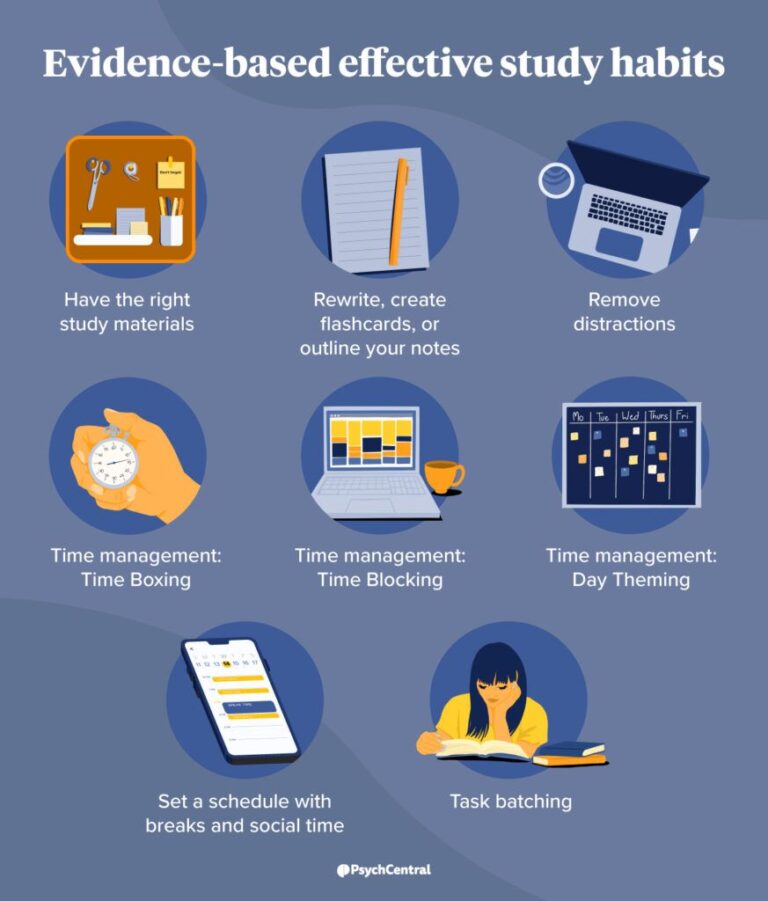How To Get Scholarships For College
Many students are unaware that millions of dollars in scholarships go unclaimed each year. This startling fact points to the incredible opportunity waiting to be seized by proactive students. By tapping into the resources available and showcasing their unique strengths, students can unlock these scholarships to fund their college education.
Understanding the different types of scholarships and how to find them is crucial. Start with academic, athletic, and need-based scholarships, which have a rich history of bolstering students’ financial journeys. Engaging with scholarship databases and consulting with college advisors can significantly increase one’s chances of success, ensuring that no stone is left unturned.

How to get scholarships for college
Getting a scholarship for college can lessen the financial burden and make higher education more accessible. Scholarships are often awarded for a variety of reasons. Some are based on academic merit, while others focus on athletic skills, leadership, or community service. Each type of scholarship has specific requirements, so understanding them is crucial. By meeting eligibility criteria, students can apply for the scholarships that best match their strengths and interests.
After deciding which scholarships to pursue, it’s essential to gather all necessary documentation. This often includes high school transcripts, letters of recommendation, and personal essays. Engaging with mentors and peers for feedback can enhance the quality of your application. To track these components, students might use
- checklists
- calendars
- reminder apps
for timely submission. Staying organized increases the likelihood of meeting all submission deadlines.
Researching scholarship opportunities is an important step. There are numerous online databases where students can search for scholarships that fit their profile. Websites like Fastweb and Scholarships.com provide extensive listings. Students should also connect with their school counselor to discover local scholarships. Combining online and offline resources maximizes the range of available opportunities.
Crafting a compelling personal statement is another key element. This is where students can share their story and what makes them unique. Proofreading for grammar and clarity ensures your message is clear and error-free. Practicing writing and rewritings rights in advance can lead to a polished final draft. A clear and authentic essay helps the selection committee see your potential and value.
Step 1: Understand different types of scholarships
The first step in getting scholarships is understanding the different types available. Scholarships typically fall into several categories. The main categories include merit-based, need-based, and athletic scholarships. Each type targets specific criteria like academic performance, financial need, or sports talent. Knowing the differences helps in finding the best match for your profile.
Merit-based scholarships are awarded for academic excellence. Students with high GPAs, strong test scores, and notable achievements often qualify. These scholarships recognize hard work and dedication in academics. Lists of merit-based scholarships can be found on many educational websites. Researching these opportunities is essential for high-achieving students.
Need-based scholarships focus on financial need rather than academics. These scholarships are designed to help students from low-income families. They require proof of financial status, which usually includes income documents. These scholarships can significantly reduce the financial burden of college. Many organizations and institutions offer need-based scholarships to ensure education is accessible.
Athletic scholarships are for students who excel in sports. Colleges and universities offer these scholarships to attract talented athletes. Participation in high school sports and a strong performance can improve your chances. Coaches often play a key role in recommending students for these scholarships. Combining academic and athletic skills can earn valuable opportunities for sports enthusiasts.
Step 2: Identify your eligibility for scholarships
Finding scholarships means knowing which ones you’re eligible for. This means checking the criteria each scholarship requires. Some may ask for a specific GPA or a particular major, while others might focus on extracurricular activities. By understanding these conditions, you can narrow down the options. It saves time and increases your chances of success.
It’s also crucial to assess personal skills and achievements. Make a list of
- academic awards you’ve received
- sports you play
- community service projects you’ve completed
. This helps match your strengths with what different scholarships value. Each achievement can be an asset. Present these confidently in applications.
Don’t forget to consider financial needs when identifying eligibility. Many scholarships have need-based criteria. These require proof of financial circumstances, often including family income. Checking eligibility in this area can unlock opportunities. It’s a vital part of the scholarship search.
Consulting with guidance counselors can help uncover additional scholarship options. They often have information on local and school-specific scholarships. Counselors can offer advice on matching eligibility with available scholarships. Utilizing their expertise enhances strategy in applying. It’s a valuable resource many students overlook.
Step 3: Research and locate scholarship opportunities
Finding scholarships requires thorough research. Start by exploring online scholarship databases. Websites such as Fastweb and Scholarships.com list numerous opportunities. These platforms allow you to filter scholarships by criteria like field of study, amount, and location. This makes it easier to find the best matches for you.
Your school’s career center and library can be valuable resources. They often have scholarship books and guides where opportunities are listed. These resources may also feature local scholarships which are less advertised online. Many students overlook these options, but local scholarships can be less competitive. It’s worth spending time exploring these avenues.
Connecting with community organizations and businesses can lead to scholarships as well. Sometimes, local companies offer scholarships to students in specific communities. Volunteering or participating in community events can sometimes lead to learning about these options. These organizations might not advertise widely, so being involved increases opportunities. Building a network can uncover hidden potentials.
Create a list of scholarships you plan to apply for and prioritize them. Consider factors like deadlines, requirements, and award amounts. This helps manage time and focus on scholarships with higher value or greater chances. Keeping organized is crucial during this step. Using a table or spreadsheet can help track progress and deadlines.
Remember to follow application instructions carefully while researching. Some scholarships may require more effort, with essays or interviews. Being prepared for these requirements in advance can help. Tracking and completing applications methodically ensures nothing is missed. A focused approach increases the likelihood of securing funding.
Step 4: Prepare strong application materials
Creating a standout application requires attention to detail. Start by neatly filling out all required forms. Double-checking your personal information for accuracy is crucial. Mistakes in your application can lead to disqualification. Every detail should be correct before submission.
Writing a compelling personal essay is a key part of many applications. This essay is your opportunity to express who you are beyond grades and scores. It’s important to share your story and what you’re passionate about. Using vivid language and specific examples can make your essay memorable. Proofreading ensures clarity and eliminates errors.
Gather letters of recommendation from teachers or mentors. These letters should reflect your strengths and character. Choose people who know you well and can speak positively about your achievements. Inform them about the scholarship’s focus so they can tailor their content. Their supportive words can make a big difference.
Having a polished resume is essential too. Highlight your skills, experiences, and extracurricular activities. Organizing this information clearly helps the committee quickly see your qualifications. Using bullet points can make it more readable. A strong resume shows you’re well-rounded and committed.
Consider creating a portfolio if applicable to your scholarship. For students in fields like art or music, showcasing your work is essential. Compile your best pieces and present them professionally. This visual element can be persuasive in demonstrating your talents. It complements the rest of your application materials.
Step 5: Apply for scholarships on time
Applying for scholarships promptly is vital for success. Start by creating a schedule with all the deadlines. Use a calendar to mark dates clearly. Missing a deadline means losing an opportunity. Staying on top of your timeline ensures all applications are submitted on time.
Prepare all necessary materials well in advance. This includes essays, letters of recommendation, and resumes. Having everything ready allows you to focus on individual applications. It also provides time for unexpected issues, like technical difficulties. A buffer time helps tackle unforeseen challenges without stress.
Always double-check your documents before sending them in. Ensure each application meets the specific requirements of the scholarship. Some might ask for additional items like video submissions or portfolios. Paying attention to each scholarship’s details can make your application stand out. Thoroughness shows commitment and respect for the process.
Mailing physical applications may still be required for some scholarships. Be sure to add extra time for delivery if that’s the case. Check each scholarship’s instructions about address and mailing requirements. Consider using a service that provides delivery confirmation. This assures you that your application reached its destination.
Maintaining a checklist for each application is a practical strategy.
- List all components needed
- Mark tasks as complete when done
- Retain notes about required unique elements
. Staying organized helps manage multiple applications efficiently. Keeping track ensures no important detail is overlooked.
Strategies to increase your chances of securing college scholarships
One effective strategy is to apply for a wide range of scholarships. This means not limiting yourself to just a few options. Explore different types, like local, national, and even international opportunities. By diversifying applications, you open doors to various possibilities. Casting a wide net increases the chances of success.
Crafting personalized scholarship essays can also set you apart from other applicants. Tailor each essay to fit the specific scholarship criteria and values. Sharing personal stories related to the scholarship theme makes your application memorable. Engage with unique details and authentic experiences that showcase your passion and determination. A compelling narrative often resonates well with evaluators.
Building relationships with mentors and teachers can yield invaluable recommendations.
- Reach out early
- Keep them updated on your achievements
- Express gratitude for their support
. Having strong letters that highlight both character and accomplishments adds weight to your application. These voices can vouch for your capabilities and promise.
Pursuing extracurricular activities is another key strategy. Involvement in clubs, volunteering, or sports demonstrates well-roundedness and leadership skills. Scholarships often favor students who contribute positively to their community or school environment. Balancing academics with extracurriculars provides a holistic profile attractive to committees.
Finally, maintaining academic excellence remains crucial throughout this process. Consistent effort in coursework shows dedication and capability, which are vital attributes scholarship providers seek in candidates.
Common mistakes students make when applying for scholarships
One common mistake is missing application deadlines. Procrastinating can lead to rushing and errors at the last moment. Many scholarships have strict deadlines, and applications received even a day late are often not accepted. To avoid this, keep a calendar with all important dates. Timely submissions can make all the difference.
Students often overlook scholarship requirements, which leads to incomplete applications. Not following instructions precisely can result in disqualification. It’s important to read the guidelines carefully and ensure all requested documents are included. A checklist can help in managing this process. Each requirement should be ticked off before submission.
Failure to personalize essays is another major mistake. Many students use generic or recycled essays that don’t address specific scholarship prompts. Customized essays that align with the scholarship’s goals are more impactful. Taking the time to tailor each essay shows effort and dedication. This can significantly increase your chances of being selected.
Another issue is not proofreading the application materials. Spelling and grammar errors can create a poor impression. Reviewing the application multiple times ensures it’s polished and error-free. Asking someone else to proofread can catch mistakes you might have missed. A clean and professional application presents you in the best light.
Lastly, students may not apply for enough scholarships. Applying to only a few limits opportunities. It’s important to apply to many scholarships to maximize chances. Using multiple resources to find opportunities helps as well. Broader efforts lead to better outcomes.
Tips to maintain your scholarships throughout college
Keeping your scholarship requires sticking to certain rules and standards. First and foremost, maintaining a specific GPA is often crucial. Many scholarships specify a minimum GPA that students must uphold. Falling below this can result in losing the scholarship. Regularly checking your grades helps ensure you stay on track.
Staying engaged in extracurricular activities is often a requirement too. Scholarships might expect you to participate in clubs, sports, or volunteer work. Balance is key; while academics are important, these activities show a well-rounded individual. Keeping a schedule can help manage time efficiently. Successful juggling of both commitments often impresses scholarship committees.
Communicating with your scholarship provider is essential. If you face challenges that might affect your academic standing, inform them. They might offer support or guidance to help you through difficulties. This shows responsibility and a proactive attitude. Staying in touch reinforces your commitment and investment in your education.
Renewing your scholarship might require completing certain forms or applications each year. Mark deadlines and requirements to ensure everything is submitted on time. Missing renewal paperwork can jeopardize funding. Keeping notes about specific actions needed helps avoid lapses. Staying informed keeps your scholarship secure.
Some scholarships require you to take a certain number of credits each semester. Make sure you’re aware of these requirements and don’t take fewer credits than required. This helps maintain full-time student status, which is often necessary. Planning your course load each semester can avoid surprises. Fulfillment of these obligations keeps your scholarship intact.
Real-life stories of students who successfully acquired scholarships
Jessica, a high school senior, won a prestigious science scholarship by passionately pursuing her interest in biology. She participated in several science fairs, earning top honors in many, and her dedication didn’t go unnoticed. Writing about her projects and experiments in her application made her stand out. Her hard work paid off when she received a full scholarship to her dream university’s biology program. Jessica’s story teaches the importance of pursuing your passions diligently.
Mark’s journey was different. As a talented basketball player, he secured an athletic scholarship. His daily routine involved rigorous practice sessions, balancing academics, and sports commitments. Coaches recognized his potential and discipline. Mark leveraged his achievements on the court to earn his college scholarship. His story emphasizes the power of dedication in athletics.
Emily found success with a need-based scholarship. Coming from a low-income family, Emily understood the importance of financial aid for her college dreams. She diligently researched scholarships that aligned with her financial situation. Submitting detailed applications with proof of need, she landed support from multiple foundations. Emily’s story highlights the role of thorough research and persistence.
Daniel’s scholarship story is a testament to community involvement. Actively volunteering with local charities and engaging in community service projects, he impacted many lives. These contributions shaped a compelling narrative for his scholarship essays. Scholarship providers appreciated his commitment to societal betterment. Daniel’s experience underscores how meaningful engagement can enhance scholarship applications.
Sophia’s artistic endeavors led to securing an art scholarship. Since childhood, her passion for painting was evident through her numerous art exhibitions. Creating a digital portfolio showcasing her best work was a key part of her application. Her talent and creativity impressed the scholarship committee. Sophia’s journey shows the importance of presenting one’s unique strengths confidently.
Final Thoughts on Securing College Scholarships
Securing scholarships requires a clear strategy and commitment to detail. Understanding eligibility, researching opportunities, and preparing strong applications are essential steps. By maintaining organized efforts, students can effectively navigate the scholarship landscape. This journey not only eases financial burdens but also prepares students for future academic and professional challenges.
Each student’s path may differ, yet the emphasis on passion, dedication, and adaptability remains constant. With careful planning and perseverance, scholarships can turn college dreams into reality. These efforts ultimately invest in a brighter future, encouraging students to explore their potentials and reach new heights. The successes shared in scholarship stories inspire a new generation to pursue excellence.


